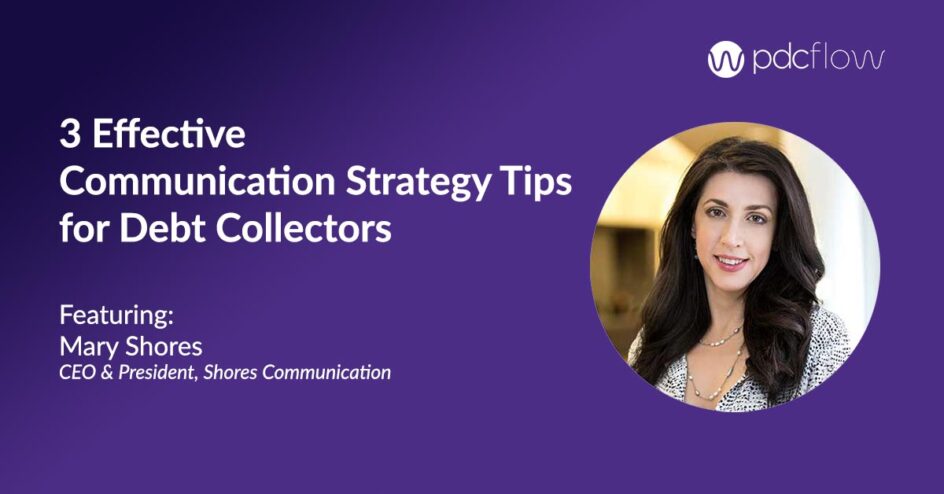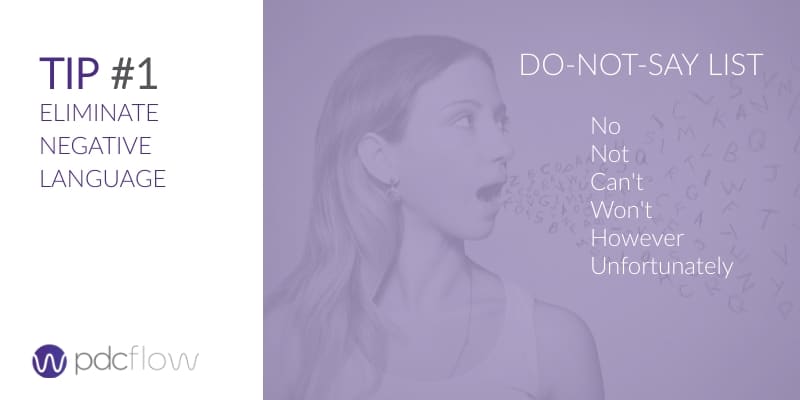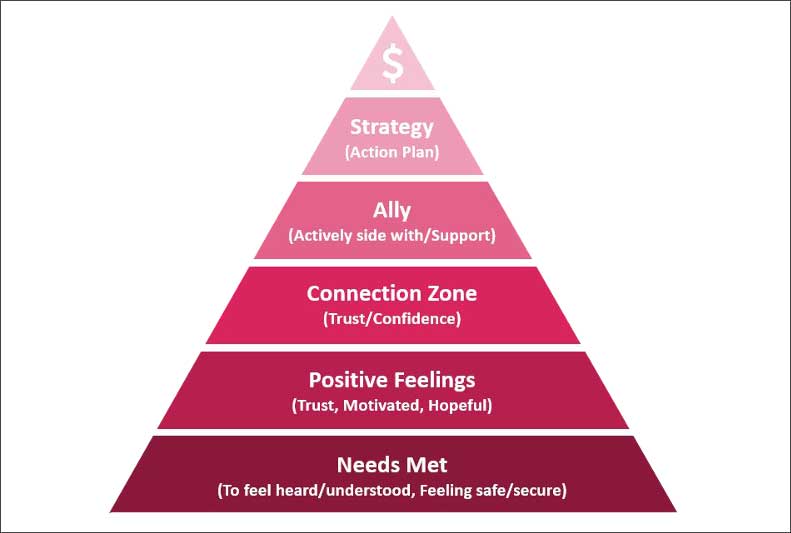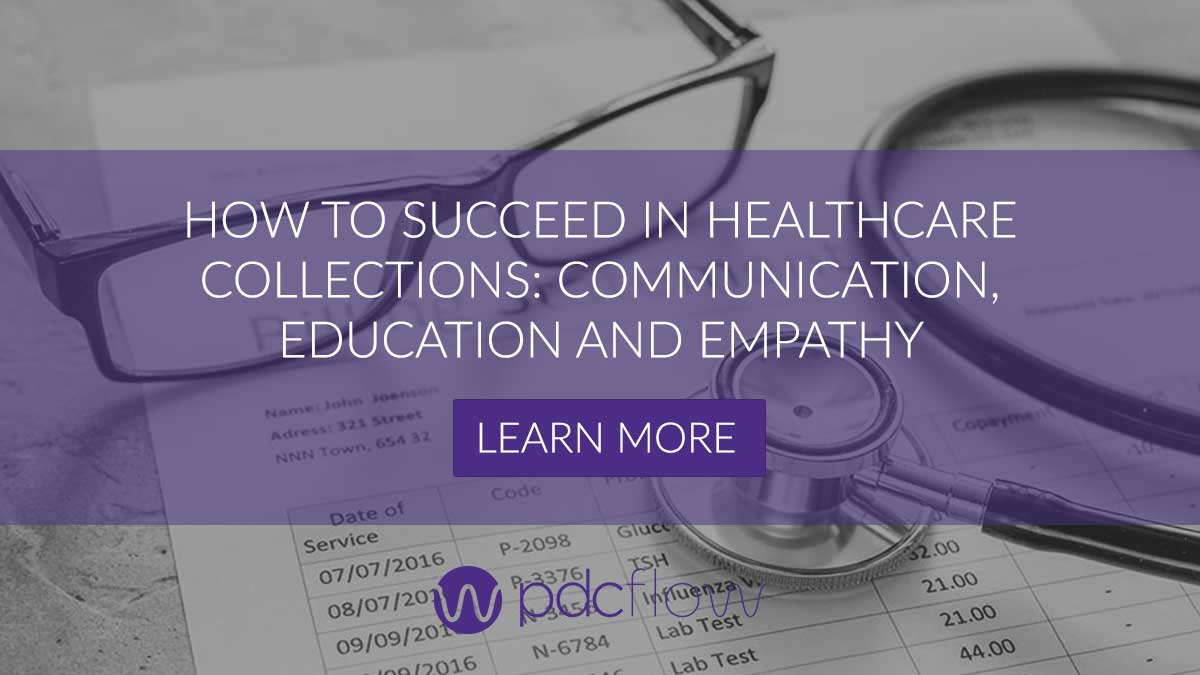I opened my debt collection agency in 1998. From day one, the stressful phone calls started to take a toll on me. Sometimes I would lose sleep at night because I was stressed about potential lawsuits, consumer complaints, or losing clients.
In 2005, all of that changed. One day, after a series of frustrating collection calls, I just looked at the phone and said, “I want the next person on the phone to be happier by the end of the call than they were at the beginning.”
That was the day happiness became my new north star.
The truth is, I didn’t know at first how I was going to achieve that goal. After all, anyone who has been on a collection call knows that a collector can lose control in a split second, and the call can go spiraling into conflict in the blink of an eye.
I knew I wanted to incite positivity on collection calls. I just didn’t know how to do that without sacrificing the bottom line.
So, in 2005, I turned my debt collection agency into a laboratory to conduct my communication experiments.
The goal? To develop an empathetic communication strategy that wasn’t too aggressive or too passive and wouldn’t negatively impact the bottom line.
My first type of communication experiment was to eliminate negative language. And guess what? It worked.
Strategies for Effective Communication in Debt Collection
Words hold so much power, no matter what our intentions are. What scientists now know is that verbal communication – the words we say – cause certain reactions in the brain.
For example, one study shows that when participants were monitored in an fMRI machine, hearing the word “no” caused activity in one part of the brain, and the word “yes” caused activity in a different part of the brain.
In other words, “no,” which has a negative connotation, has a vastly different neurological impact than the word “yes.”
Tip #1: Eliminate Negative Language
Why does this matter in debt collection?
The words we speak to consumers can determine the roadmap of our calls. For example, negative language can cause conflict, and positive language can build trust and prime the consumer to share information and work toward a solution.
I learned this back in 2005 when I implemented the first part of my plan to transform my agency’s collection calls. We started by eliminating 6 negative words.
I completely banned the words at my office. To this day, we never say them.
The words are…
- NO
- NOT
- CAN'T
- WON'T
- HOWEVER
- UNFORTUNATELY
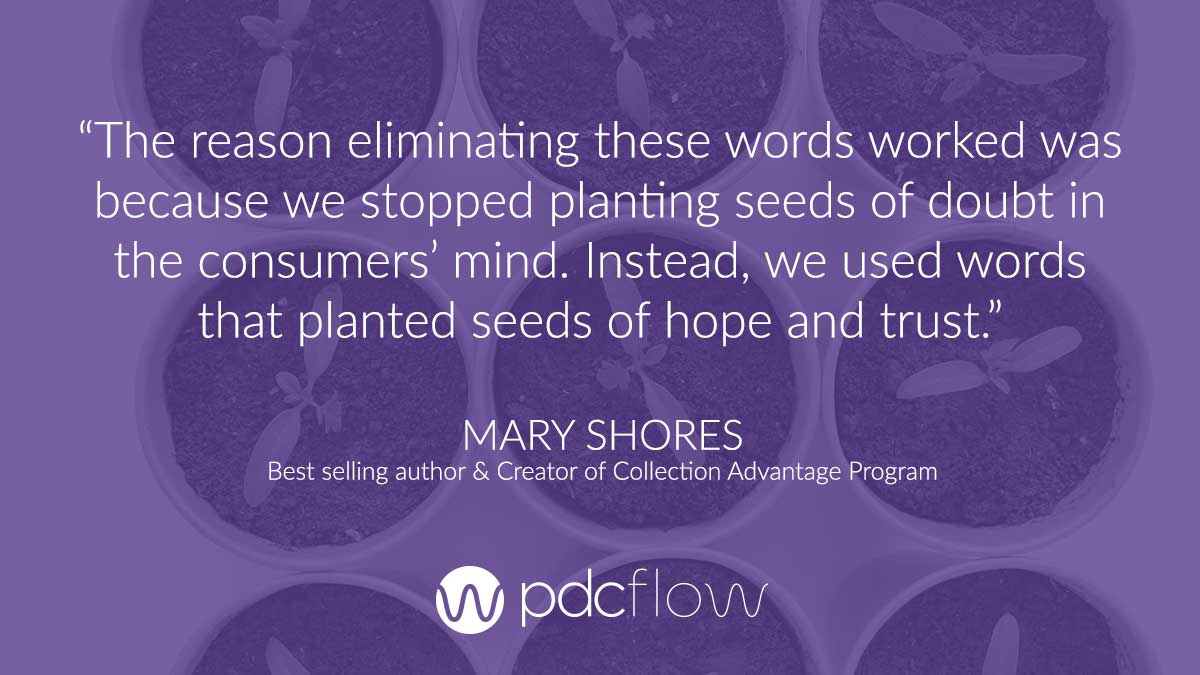
At the time, I didn’t know what the impact would be. I didn’t know what my collectors would say instead of the negative words. All I knew was I wanted to decrease the negativity on collection calls.
What I didn’t expect was for my revenue to increase by 34% in the first year alone.
The reason eliminating these words worked was that we stopped planting seeds of doubt in the consumers’ minds. Instead, we used words that planted seeds of hope and trust.
We were able to build deeper connections with the people we spoke to each day, which ultimately resulted in more payments.
And, there was magic in eliminating negative language and trying to find other phrases to use instead. This process increased my team’s critical thinking skills because they were able to focus on solutions rather than roadblocks. It was a win-win for both the consumers and our agency.
The great news is, other agencies have implemented these communication strategies too, and they have worked! Even if it seems too good to be true, try implementing the Do-Not-Say List at your agency, and watch how it transforms conflict into connection. You’ll love the results.
Luckily, I now have additional tips to make the Do-Not-Say List easier to use, so let’s dive into the second tip: bringing humanity back to the process.
Tip #2: Bring Humanity Back to the Process
I wholeheartedly believe that the debt collection industry was built on a baby-boomer mindset of pride and responsibility. In the 1900s, people were motivated to pay their debts because that’s what they felt they were supposed to do.
Now, we’re in the millennial era, and people make decisions based on how they feel. Whether you’re a millennial or not, this mindset change likely affects you.
With that in mind, we can adapt our communication methods to bring humanity to the process to appeal to the emotional needs of our consumers. The best way I’ve found to do this is to focus on connection.
While avoiding negative language can start the process of connecting with consumers, we can take additional steps to solidify that connection on almost every call.
A great way to do this is by following this simple connection equation:
CONNECTION = TRUST + RAPPORT + CONFIDENCE
CREATING TRUST
Debt is a sensitive topic, so many consumers are on the defensive when our collectors speak to them. Consumers need trust before they can reach a solution.
A great way to build this trust is to practice active listening and validate the consumer’s concerns to make sure they feel heard and understood. Sharing this vulnerability with the consumer will help them soften up and trust the collector more.
“That sounds really challenging.”
"I appreciate you sharing that with me."
"I can understand the uncertainty you feel."
"I know this is a challenging time."
BUILDING RAPPORT
Rapport-building is a very easy step, yet it’s often forgotten. We build trust with the consumer and then try to rush to a solution. This is a common mistake that can ultimately affect a consumer’s desire to pay because even if a consumer trusts the collector, they still need to feel comfortable enough to reach an agreed-upon solution.
The best way to build this much-needed rapport is to humanize the conversation. The collector can let the consumer know they’re excited to help them find a solution or that they have great options available.
Usually, this can be done in one sentence or even just a few words, and it works because the prospect of a positive outcome can build that human-to-human rapport the consumer needs to feel comfortable paying your agency.
CONSUMER CONNECTION
I mentioned earlier that using the Do-Not-Say List helps collectors think in terms of solutions. This step of the consumer connection equation is when thinking in terms of solutions is the most important.
The consumer needs to be confident that the collector can help them, and the way to build that confidence is by discussing the solutions instead of citing policy or explaining what can’t be done.
When the collector communicates effectively in terms of solutions, the consumer believes that “they’ve got this,” and they can finally relax and feel fully connected and ready to pay.
While the first two tips were largely about developing effective communication skills, the final tip is more strategic.
Let’s get into the last way to increase collections, which is all about creating a positive work environment and making the collectors themselves feel valued.
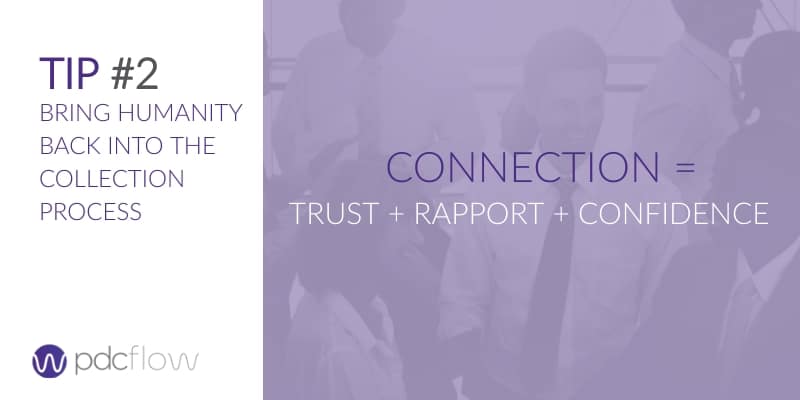
Tip #3: Embrace Professional Development
All of the tips so far will help your collectors embrace good communication and listening skills that convert. Beyond that, we need to make sure we’re investing in the collectors’ voice to keep increasing collections over time.
Think about it: we can’t connect with consumers without our collection teams.
I’ve learned over the years that collectors appreciate when we invest in them, and investing in our veteran collectors is just as important as investing in our new hires.
Whether you invest in industry conferences or online courses, your collectors will appreciate your interest in their professional development. They’ll feel supported and valued as an employee, which will, in turn, benefit morale, motivation and employee engagement.
When morale is high, collections usually follow the same trend. After all, it’s easier for collectors to make connections with consumers, improve communication skills, and eliminate negativity when they feel excited about their careers.
Remember: the most powerful tool in our industry is the collector’s voice. We can invest in other areas of our business, such as technology to see positive change. That said, investing in our collectors’ voices is essential to scale our agencies.
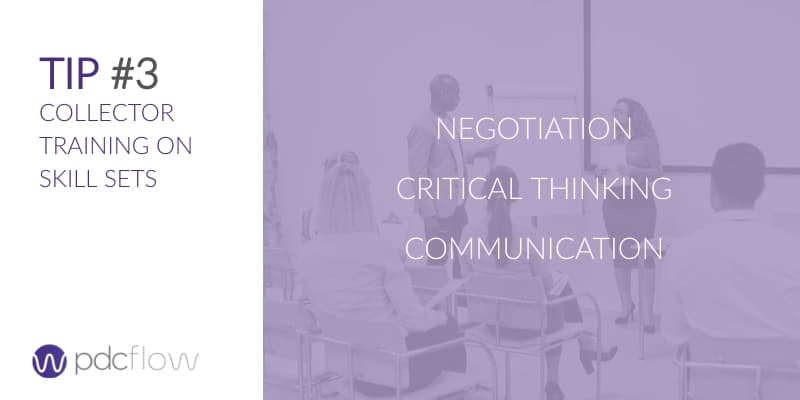
Educate, Invest, Connect
You have the power to transform your collection floor one conversation at a time.
The secret ingredients are to educate and invest in your collectors' communication skills and teach them how to create strong, meaningful connections with consumers.
Subscribe for weekly updates or to our monthly newsletter for more actionable insights, tactics, and expert advice to improve the payment experience and create a better cash flow.
Sign up:
Want to know more about PDCflow Software?
Press ▶️ to watch our explainer video
REDUCE RISK
- ABOUT THE AUTHOR -

Mary Shores, Agency Owner
Mary Shores is a second-generation collection agency owner, a bestselling author, and an international speaker. Her current passion in life is promoting collector training and development through The Collection Advantage online training program, which features Mary’s extensive studies into neuroscience and compassion to teach collectors how to execute high-converting, empathetic scripting.

